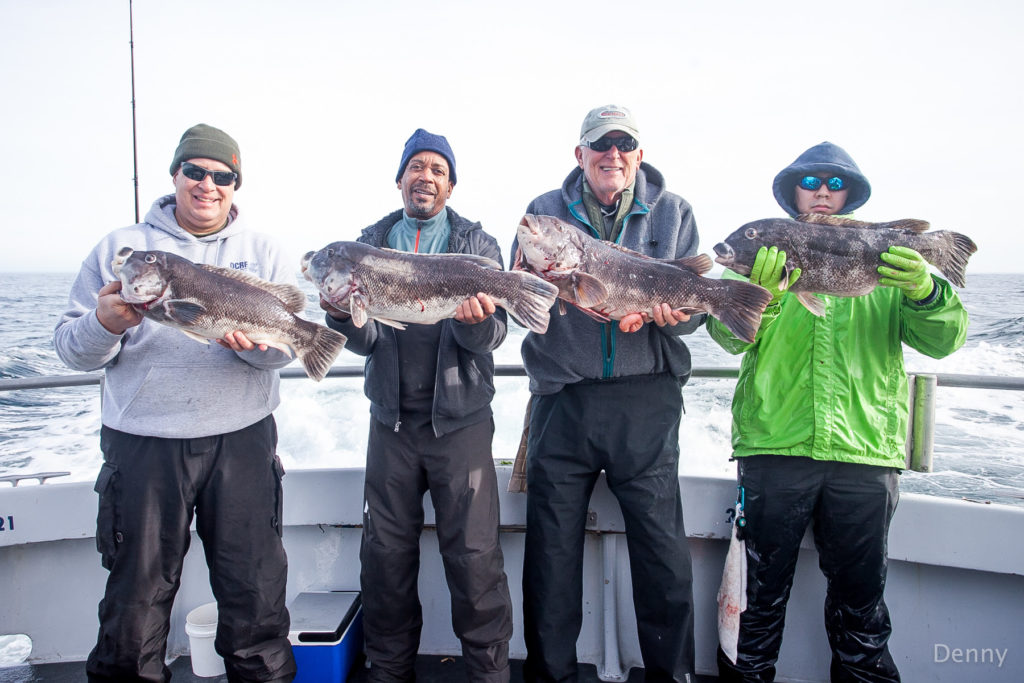Sporting Life

Time to Tangle with a Tog
By Dennis Doyle
April is the traditional start of Maryland’s best fishing season except that once again it’s not.
The 2022 rockfish season won’t begin until next month, the yellow perch run started late, the white perch run is real slow in coming on and it’s still too cold in the shallows for snakeheads. There is one fish, however that’s on time, a powerhouse, delicious, and on the bite.
Some anglers even find the tautog handsome, not all of course, but beauty is in the eye of the beholder. And in my experience the blackfish is a handsome and very charming character indeed.
A cold-weather lover, the tautog is the equal of the pickerel when it comes to chilly weather availability. The frigid temps may just slow it down a touch, but it still keeps cruising and eating. Oh, and by the way, it is a brawler of maximum excellence.
If you’ve a yen for some hot fishing, sparse crowds, and a battle with a pro-level fighter, now is the time to head to the oceanside. Now crowding the mouth of the Bay and areas surrounding Ocean City, it’s the tautog’s time of year. If you’ve got a boat you’ll almost have the place to yourselves and if you don’t, the headboats aren’t crowded, charters aren’t all booked up, and shore and pier fishing is yours for just showing up.
Tautog are moving inshore with warming water and if you’ve never caught one, be careful. They are an addictive, not to mention violent, experience. You’ll need some fairly stout tackle that can cast a short distance and have plenty of backbone, at least 20-pound mono or 30-pound braid on your spool plus a reel with a drag that will match that line, because you’ll have it tightened to the max.
One tactic that tautog, aka tog or blackfish, always rely upon for their first move when hooked is to flee to cover. Into a hole in the rocks, around and through old piers, around jetty boulders, into a wreck or wherever they’ve been hiding—that’s their first move and if you don’t stop them right then, you’ll not stop them at all. They will be gone.
The old timers who specialized in tog fishing were familiars of auto repair shops and gas stations for one reason: discarded spark plugs. Just the right size and shape for a sinker, old spark plugs were the economical choice for tog rig because if you weren’t losing a lot of rigs, either you weren’t fishing the right spots, or you weren’t hooking up with many togs.
Tog fishing means losing lots of rigs to either structure fouling or a fish stronger than you or your tackle—definite challenges to a determined angler. Their preferred environments and pugnacious character have made them choices for commercial exploitation; so recreational anglers are their main fan base. That, plus a long life span—they can live to 40—a good growth rate reaching 36 inches and 25 pounds, and are generally found in inshore waters less than 60 feet. That means if you want to find them, you can.
Use medium-sized, short-shanked, (offset 1/0 to 4/0), extra stout hooks and a 2-ounce sinker. A keeper tog has large, hard, rabbit-like, teeth intended for piercing crabs and other armored crustaceans, they can cut through light to medium wire like cooked pasta. Sand fleas, rock crab, fiddlers, green and blue crab, whole and in pieces, are the best bet. Whole crabs should be cracked before sending them down to provide a scent stream for the tog to locate.
They are easy to fillet boneless, have sweet, firm, white meat and generous regulations for harvest, 16-inch minimum, four fish per person limit. Fishing is closed though for their spawning season, May 16 through June 30.
